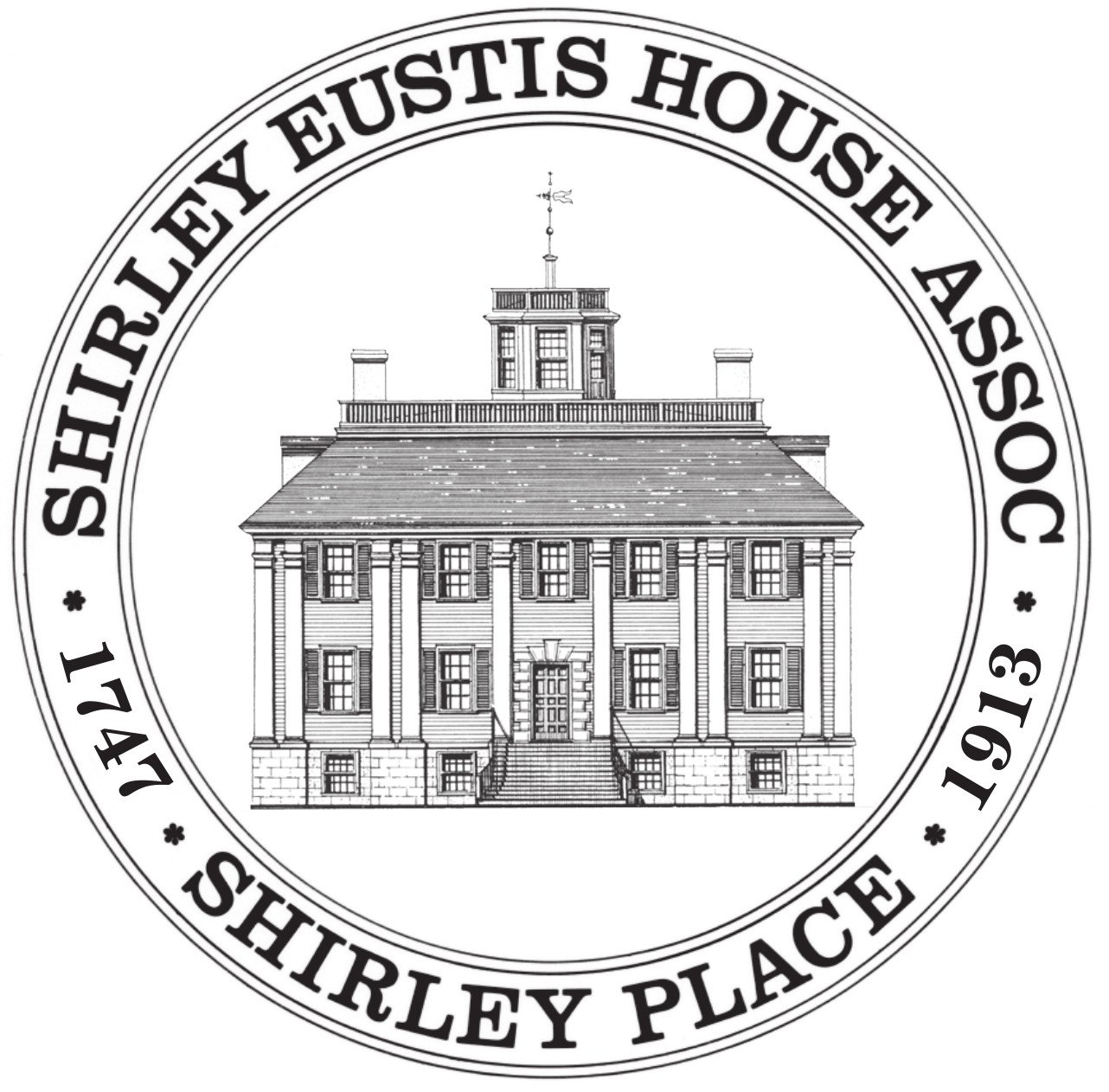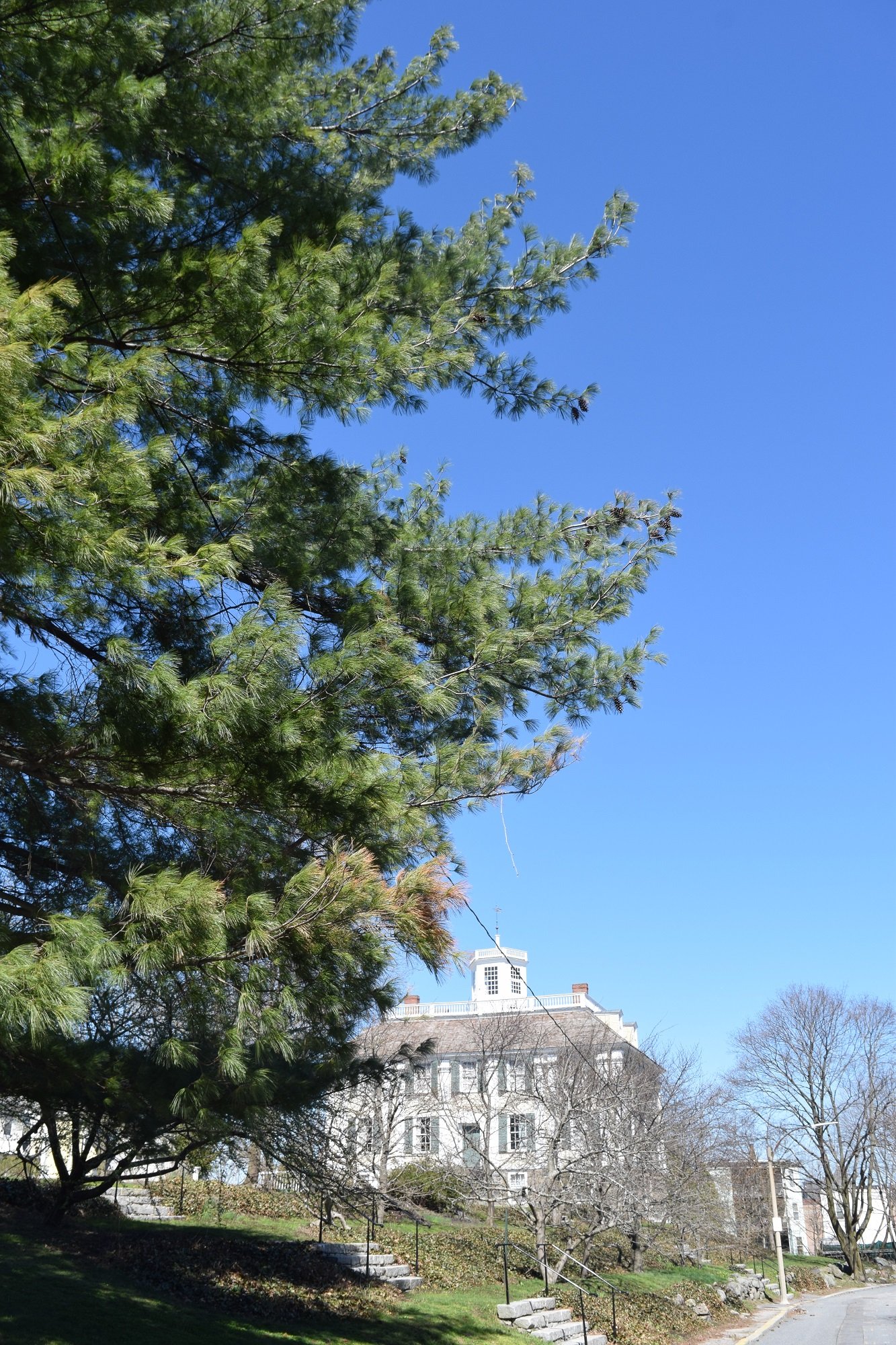Empire of Trees
We’ve been busy
over the past year at Shirley Place removing trees that have grown up where they didn’t belong. One volunteer that won’t be getting the axe anytime soon is this white pine growing in the west lawn. From an aesthetic point of view, it’s not well located. It obscures a fine view of the lawn as you enter Rockford Street. On the other hand, it’s a beautiful, fragrant tree, specifically, an eastern white pine, pinus strobus, a species whose history is linked to that of Governor Shirley. For starters, when the Governor’s contractors built the house in 1747 they used white pine for parts of the frame and interior trims. This was typical. Old growth white pines, oaks, and chestnuts in New England and Canada provided a seemigly inexhaustible supply of building materials for the swelling numbers of colonists invading the New World.
But more importantly for the British Empire, the tall, straight Eastern white pines (sometimes growing as high as 200 feet), provided strong, flexible timbers for His Majesty the King’s naval ships, especially for masts and spars.(the English wryly called mast timbers “sticks”). In North America there were immense forests of white pines stretching for hundreds of miles into the interior. By claiming the biggest trees in these woodlands for the King, the British navy could obtain the lumber cheap. This meant that the navy would not always be forced to buy their timber from Russia via the Baltic Sea. This Baltic trade had never been a good solution for the English. They had to compete with the Dutch and the French in the same market, and of course Russia could demand a premium price for their lumber. At the very least controlling the timber reserves of North America could ensure a back-up supply in the event that it might be closed off entirely during one of the numerous European wars. This new resource also explains why the English had an interest in ousting the French from Canada as they rapidly depleted the New England forests.
Not long after William Shirley arrived in Boston in 1731, he met David Dunbar, Surveyor General of the King’s Woods for the Massachusetts and New Hampshire colonies. Dunbar’s job required him to inventory and mark any white pines within 10 miles of a navigable waterway that had a diameter of 24” or more. The King’s Broad Arrow mark, an arrowhead shape carved into the bark of the tree, signaled that it was the property of the King of England and was reserved for use by the Navy. Colonists were forbidden to cut down for private use any tree so marked.
An empire is easier to color in on a map than to manage on the ground, however, and the King’s own subjects in New England usually disregarded the law. They cut whatever trees they wanted because the mother country would never supply Dunbar with enough men on the ground to enforce it. Dunbar’s job was thus a thankless one. It kept him in continual hot water with Shirley’s predecessor, Governor Belcher, who had long turned a blind eye to the cutting of His Majesty’s trees in order to curry favor with his timber-smuggling colonial supporters. Dunbar and Samuel Waldo, the businessman who had the contract to cut down the King’s masts, also received regular death threats from locals (google the Pine Tree Riot of 1772) on whose property the trees were found.* Belcher filled his letters to England with nasty names for Dunbar, and portrayed him as an instigator. Though a naïve and ambitious Shirley at first tried to wrest the Surveyor’s job from Dunbar, he soon found it to his advantage to ally with Dunbar in opposition to Governor Belcher. With help from his supporters in England, including the energetic Mrs. Shirley, this strategy worked, and Shirley eventually obtained the governor’s office in 1741. Predictably, he too was then hard pressed to navigate a safe political course between the colonial timber barons and the efforts of Dunbar to enforce the claims of the Empire. Shirley’s ability to play both sides accounts for his longevity as Governor— it was nine years before he himself was ousted by the political maneuvering of his enemies. Among them was his old ally, Samuel Waldo. The details of this saga read like and episode of the TV Show Dallas, and it sometimes got as brutal as Game of Thrones. Just substitute trees or “spice” for oil. So our beautiful Pinus Strobus adds its own dramatic chapter to the backstory of Shirley Place, and we’d rather it were in the way than gone entirely.
For an excellent read on the felling of the North American forests in the cause of fortune hunting and empire building, we recommend Annie Proulx’s Barkskins: A Novel published in 2017. Proulx’s story follows two related families across the centuries. One, an Anglo family, grows powerful and rich in the timber trade and the other, a Native American family is broken apart by it.
*When it came time to purchase a tract of Roxbury real estate on which to build his dream house, Waldo supplied him the land.
A beech tree in England marked with the King’s Broad Arrow. Image courtesy of the New Forest National Park Authority's Historic Environment team.


